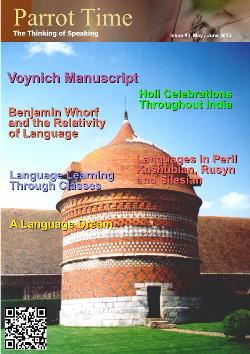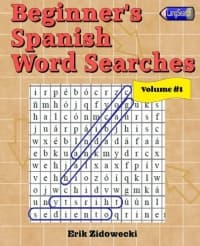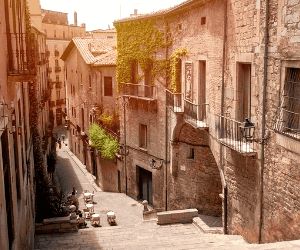The Voynich Script
Cryptic Codex

|
Theories About Authorship While the origins of the manuscript aren't completely clear, even less is known about the person or persons that wrote it. A number of suggestions have been given and argued about.  Roger Bacon According to the letter from Marci to Kircher, the manuscript was originally presented to Emperor Rudolph with a cover letter explaining that the document was written by Roger Bacon. Voynich believed that was the truth, and tried for many years to confirm it. However, other scholars that studied both the manuscript and Bacon's work have said it is not possible. If the document had been written by Bacon, then it is assumed that the mysterious man who presented Rudolph with it would have been John Dee, who was known to have a large collection of Bacon's works. Dee was a mathematician and astrologer at the court of Queen Elizabeth I, and, with his assistant Edward Kelley, lived in Bohemia for several years, hoping to sell their services to Rudolph. This connection has been discounted because Dee kept highly accurate diaries of all his sales and the manuscript is never mentioned in them. Some speculate that Dee himself may have written it and attributed it to Bacon, in the hopes of selling it for a high price. Rudolph paid six hundred gold ducats for it, which was an amazing amount of money at that time to pay for anything as simple as an unknown manuscript. Still going with the Bacon-Dee connection, some suspect Kelley might have written it. Kelley was a bit eccentric, claiming that he could turn copper into gold, which is an alchemist's dream. He also claimed to have conversations with angels using a crystal ball, which Dee recorded. He even had a language the angel's used which became called Enochian. It is believed that Kelley fabricated these claims in order to fool others, including Dee, and so he may have created the Voynich Manuscript to swindle the Emperor as well. The problem with this theory is that it rests on Dee being the one who delivered the manuscript, claiming that Bacon wrote it, and that theory is dependent on Bacon being the author. Note too that the entire story of the man selling Rudolph the manuscript is from the letter Marci sent Kircher, and it is unknown how Marci obtained this knowledge.  Page showing many colourful plants Another suggestion is that Jakub Hořčický (Jakub de Tepenecz) could be the author. Not only was his signature found on the first page, but he was also a specialist in herbal medicine, which the manuscript seemed to make many references to. However, the writing in the manuscript does not match that of Jakub's signature. It is possible that he was the author and that the signature itself was added by a later owner who had also speculated that Jakub was the author. It has also been suggested that the signature was added by Voynich in order to give more credence to the Roger Bacon theory. Even Voynich himself has been suspected numerous times of creating the the manuscript. He was an antique book dealer, and it is hypothesized that he had the knowledge to fabricate a fake, for an unknown book by Roger Bacon would have been very valuable. Experts have dated the manuscript, and found it to be much older, however, and it can't explain the letters by both Baresch and Marci to Kircher.  Page showing women and astrological symbols At this point, the ideas becomes more conspiratorial. Marci and Kircher had been friends for 27 years after meeting at the Charles University to Rome in 1638 and had exchanged letters many times. Marci had been part of a struggle by the secular side of the University to keep it from joining their rival, the Clementinum college in Prague. The two universities did merge, however, in 1654, and fell under Jesuit control. It has been thought that perhaps Marci held some further animosity toward the Jesuits and created both the manuscript and Baresch's letters, sending them to Kircher, in the hopes of discrediting him because he was a major figure among the Jesuits. This idea is not completely unprecedented. A similar trick had already been played on Kircher by orientalist Andreas Mueller who has once sent him an unintelligible manuscript, claiming it came from Egypt. Mueller wanted Kircher to translate it, and supposedly, Kircher provided him with a translation. It is also interesting to note that the only proof that Georg Baresch even existed is the letters from he and Marci. There isn't even a proof of ownership of a house in Prague to Baresch, although it is claimed he lived there. Also, there is no more known correspondences between Kircher and Marci after the cover letter and manuscript were sent to Kircher. But there is no proof that Marci had any such resentment or hostility toward the Jesuits. He was a devout Catholic himself and had studied to become a Jesuit, even being granted an honorary membership in their Order shortly before his death. Enochian  Edward Kelley Enochian is the name of the angel's language as recorded in the journals of John Dee and his assistant Edward Kelley, two alchemist of 16th century England. The name comes from "Enoch", the Biblical father of Methuselah, who, according to legend, had been taken on a tour of Heaven by angels, which he then wrote about in a book. Kelley claimed to talk to the angels using a crystal ball and he dictated to Dee what they told him. Some scholars of magic believe it to be a constructed language that can be used in the working of magic. However, scholars of constructed languages believe it to be just a poor imitation of an ancient language using basic English grammar.  The journals of these two men contain a great deal written in the language, with only a little of it having English translations. Those who have studied Enochian do not consider it to have an extraordinary features. The journals also never describe the language as "Enochian". Instead, they contain references like "Angelical", the "Celestial Speech", the "Language of Angels", and a few others. The term "Enochian" was assigned to it because of Dee's own assertion that Enoch had been the last previous human to know the language. |
| Voynich Manuscipt - Cryptic Codex | ||||||||||||||||||||
| Writer: | Lucille Martin | |||||||||||||||||||
| Images: | ||||||||||||||||||||
| ||||||||||||||||||||
| Sources: | ||||||||||||||||||||
| ||||||||||||||||||||
All images are Copyright - CC BY-SA (Creative Commons Share Alike) by their respective owners, except for Petey, which is Public Domain (PD) or unless otherwise noted.
comments powered by Disqus



















